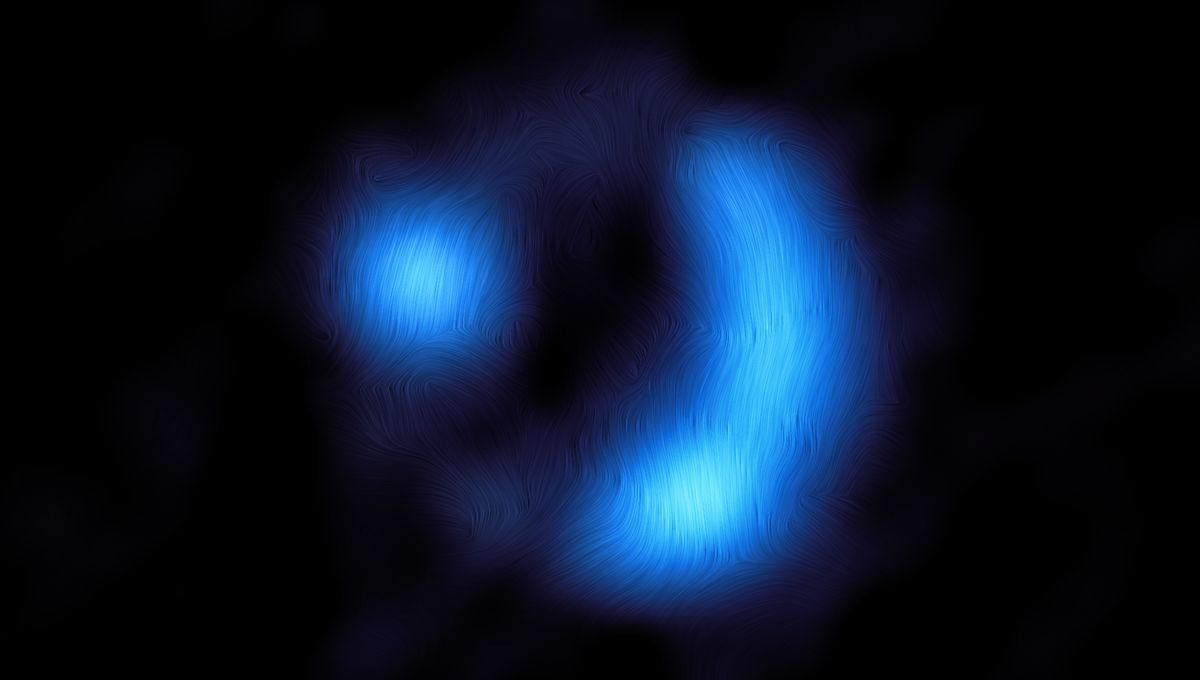
Astronomers have measured the most distant magnetic field of a galaxy yet. The light of this object has traveled for 11 billion years to get to us, and it carried the information of what the magnetic field of this galaxy was like. An incredible discovery.
Magnetic fields play a very important role in the evolution of galaxies. They influence how the material between stars behaves, and even the formation of stars. While the magnetic fields of the Milky Way and other nearby galaxies have been mapped, it is unclear how early these structures formed and what role they played.
“Many people might not be aware that our entire galaxy and other galaxies are laced with magnetic fields, spanning tens of thousands of light-years,” lead author James Geach, a professor of astrophysics at the University of Hertfordshire, UK, said in a statement. “This discovery gives us new clues as to how galactic-scale magnetic fields are formed.”
The observations were possible thanks to the Atacama Large Millimeter/Submillimeter Array (ALMA). The magnetic field interacts with dust grains in the galaxy, aligning them along the field lines. So the heat emitted by this dust has a specific alignment, something called polarization, that can be measured.
“No other telescope could have achieved this,” added Geach.
The magnetic field is similar to what has been seen in much closer galaxies. It is about 1,000 times weaker than Earth’s own, but obviously much larger. It extends over more than 16,000 light-years. The presence of such an established field in the still-young universe suggests that these magnetic structures can develop quickly and don’t require billions of years of assembly.
“We actually know very little about how these fields form, despite their being quite fundamental to how galaxies evolve,” added co-author Enrique Lopez Rodriguez, a researcher at Stanford University.
But observations such as this are actually opening up “a new window onto the inner workings of galaxies, because the magnetic fields are linked to the material that is forming new stars,” according to co-author Rob Ivison, an astronomer with the European Southern Observatory.
The galaxy in question is called 9io9. It is a gravitationally lensed galaxy, its image and light comes to us much more clearly because there is another galaxy in front. The foreground galaxy is massive and dense enough to warp space-time like a lens, magnifying the light of the much more distant background galaxy. This galaxy was discovered by amateur astronomer Zbigniew Chetnik as part of the citizen science project Spacewarps.
The research was published in the journal Nature.
Source Link: Most Distant Detection Of A Galaxy’s Magnetic Field Ever Reported